Understanding Contact Center Predictive Analytics in 2025
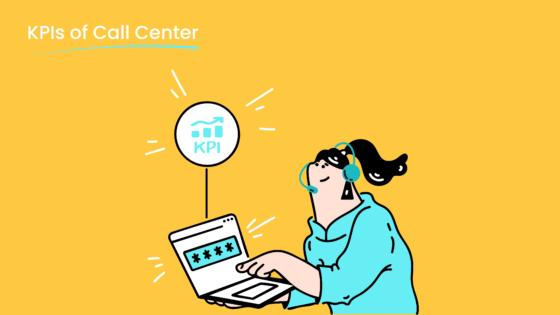
Contact center predictive analytics uses data and advanced algorithms to forecast customer needs and improve service. Imagine a retail or finance team struggling to manage rising call volumes and wanting faster solutions for every customer. Predictive analytics unlocks actionable insights, guiding agents to resolve issues quickly and boost satisfaction. Nearly 70% of contact centers now use or plan to use AI strategies, and 94% report improved agent productivity through predictive tools. 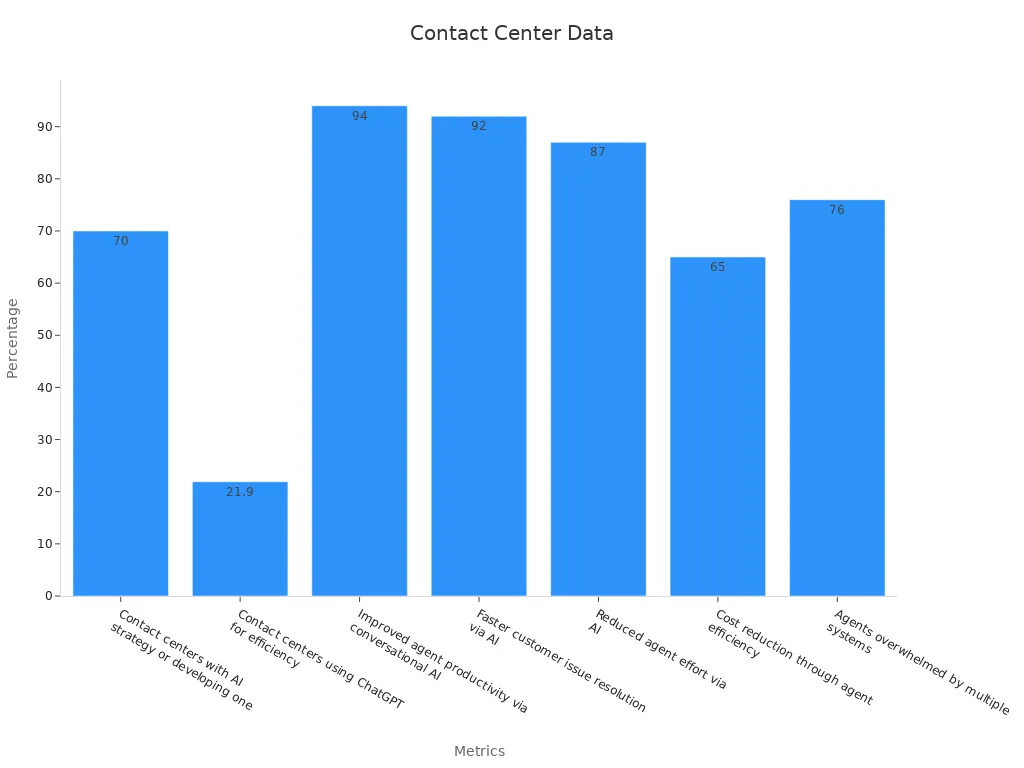 Sobot AI gives teams actionable insights, helping every service interaction become smarter and more predictive.
Sobot AI gives teams actionable insights, helping every service interaction become smarter and more predictive.
What Is Contact Center Predictive Analytics?
Definition and Core Concepts
Contact center predictive analytics uses advanced technology to help businesses understand and improve customer service. It combines artificial intelligence with data analytics tools to predict what customers might need next. This approach turns large amounts of data into actionable insights, helping agents perform better and making the customer experience smoother.
Predictive analytics in contact centers means using historical and conversational data, along with AI, to forecast customer behavior, call volumes, agent performance, and even the risk of losing customers. For example, predictive analytics tools can:
- Forecast call volumes and peak times, so managers can schedule agents more efficiently.
- Predict hold times, helping teams manage queues and set customer expectations.
- Route calls to the best-suited agents by analyzing customer data.
- Identify patterns in repeat calls to improve first call resolution.
- Analyze customer interactions to enhance sales offers and increase conversions.
- Detect early signs of customer churn by examining conversations.
- Provide actionable insights for strategic decisions using conversation intelligence.
These predictive analytics tools and predictive analytics software help contact centers move from simply reacting to problems to preventing them. Sobot, for example, uses predictive analytics software in its Voice/Call Center product to deliver real-time insights and improve agent performance. This approach leads to measurable results. Industry studies show that using big data analytics can boost call center productivity by nearly 60%. The cost per live service contact drops to $8.01, and employee engagement can increase profitability by over 20%. Source
| Statistic Description | Value/Impact |
|---|---|
| Productivity boost from Big Data Analytics | 59.9% increase in call center productivity |
| Cost per live service contact | $8.01 per contact |
| Employee engagement impact on profitability | Over 20% increase |
| Call center employment growth (US, 2019-2022) | From 1.15 million to 2.79 million |
These numbers highlight how predictive analytics software and predictive analytics tools can transform contact centers.
How Predictive Analytics Differs from Traditional Analytics
Traditional analytics looks at past events. It answers questions like "What happened?" and "Why did it happen?" Teams use dashboards, reports, and spreadsheets to review data. This method helps with reporting and compliance, but it often causes delays because decisions come after trends appear.
Predictive analytics, on the other hand, uses both past and current data to predict what will happen next. It answers questions like "What’s likely to happen?" and "What can we do now?" Predictive analytics tools and predictive analytics software use machine learning and algorithms to automate insights and scale with growing data. This approach uncovers new opportunities, prevents risks, and helps teams adapt quickly.
| Aspect | Traditional Analytics | Predictive Analytics |
|---|---|---|
| Focus of Analysis | Analyzes historical data to understand past events. | Uses past and current data to predict future outcomes, enabling proactive decisions. |
| Type of Questions | Answers "What happened?" and "Why did it happen?" | Answers "What’s likely to happen?" and "What can we do now?" for planning and risk reduction. |
| Tools & Techniques | Dashboards, reports, spreadsheets; manual and limited. | Machine learning, algorithms; automates insights and scales with data growth. |
| Business Value | Useful for reporting, reviews, compliance. | Uncovers opportunities, prevents risks, adapts quickly to changes. |
| Decision Speed | Decisions after trends appear, causing delays. | Enables faster decisions using early indicators and forecasts. |
| Data Usage Depth | Structured data from limited sources (e.g., CRM). | Uses structured and unstructured data (e.g., web behavior, reviews) for deeper insights. |
Predictive analytics enables faster, up-to-date insights. Businesses can react quickly and make proactive decisions. Forecasting helps anticipate future trends and resource needs, improving planning and reducing waste. Predictive analytics software increases operational efficiency by optimizing processes and reducing downtime. It improves resource allocation by predicting demand and workforce needs, leading to cost savings. Systematic algorithms in predictive analytics tools analyze large data volumes, making predictions more accurate and minimizing errors. Customer experiences improve through personalized marketing and proactive issue resolution, which increases satisfaction and loyalty. Real-world case studies show that predictive analytics brings measurable improvements in revenue, efficiency, and customer metrics.
Sobot’s predictive analytics software and predictive analytics tools help businesses gain actionable insights from every customer interaction. By using these solutions, contact centers can stay ahead of customer needs and deliver exceptional service.
Why Predictive Analytics Matters
Customer Experience and Satisfaction
Predictive analytics has become a game-changer for customer service. Companies now use predictive tools to understand what customers need before they even ask. This approach helps agents solve problems faster and makes every service interaction smoother. Businesses see real results when they use predictive analytics to improve customer satisfaction.
| Metric / Outcome | Statistic / Result | Impact on Customer Experience |
|---|---|---|
| Businesses competing primarily on customer experience (Gartner) | 89% | Shows the importance of customer experience as a competitive factor, supported by predictive analytics |
| Contact centers reporting improved customer satisfaction (Deloitte) | 88% | Indicates widespread positive impact of predictive analytics on satisfaction |
| Workforce efficiency improvement (McKinsey) | Up to 30% | Enhances agent productivity, indirectly improving customer experience |
| Reduction in average call wait times (McKinsey) | 20% | Directly reduces customer wait, improving experience |
| Churn rate reduction in telecom provider | 15% | Proactively addressing complaints reduces customer loss |
| Reduction in average customer wait times (Gartner case study) | 15% | Faster service leads to better customer satisfaction |
| Improvement in first-call resolution rates (Gartner case study) | 20% | Resolving issues on first call enhances experience |
| Decrease in agent idle time (McKinsey case study) | 25% | More efficient staffing improves service availability |
| Drop in customer complaints related to service delays (McKinsey case study) | 18% | Fewer complaints indicate better service quality |
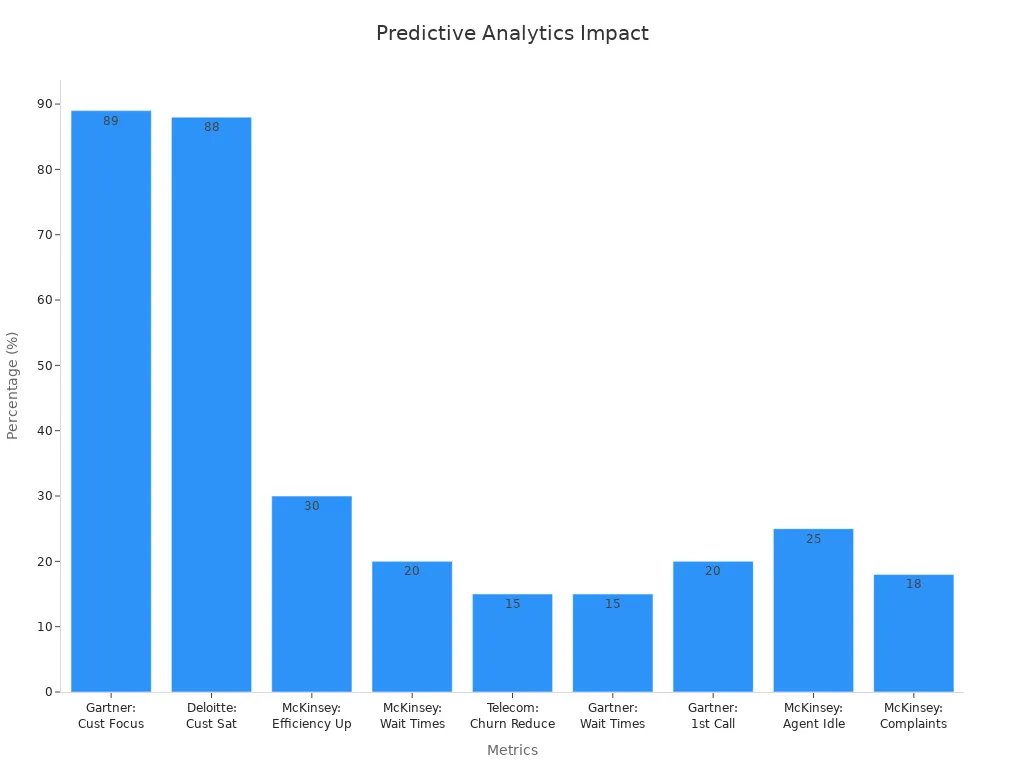
Predictive analytics helps contact centers spot signs of customer dissatisfaction early. Teams can then act fast to keep satisfaction high. For example, Sobot’s Voice/Call Center uses predictive analytics to route calls to the right agent, reducing wait times and boosting first-call resolution. Case studies from companies like Stitch Fix and Amazon show a 30% increase in customer satisfaction after using predictive analytics. These results prove that predictive service tools make a real difference in customer experience.
Operational Efficiency and Cost Savings
Predictive analytics also drives efficiency and cost savings in customer service. By forecasting call volumes and customer needs, managers can schedule the right number of agents. This reduces idle time and prevents long waits. Predictive tools help teams handle more calls with fewer resources, improving overall service performance.
| Company | Cost-Saving Metric | Documented Impact |
|---|---|---|
| Capital One | Reduction in overall call volume | 17% decrease due to speech analytics |
| British Airways | Reduction in average handle time (AHT) | 28 seconds less per call via agent coaching |
| Humana | Reduction in inbound calls | 25% decrease by identifying at-risk customers |
| General Ranges | Agent performance improvement | 10-30% improvement through analytics-driven coaching |
| General Ranges | Reduction in repeat contacts | 10-20% potential reduction identified |
Predictive analytics allows contact centers to cut costs by reducing repeat calls and improving agent performance. Sobot’s unified workspace and AI-powered Voicebot help agents manage calls more efficiently, leading to faster resolutions and lower operational costs. Companies like Capital One and Humana have documented double-digit reductions in call volume and inbound calls after using predictive analytics. These improvements show how predictive service tools boost efficiency and save money, all while keeping customer satisfaction high.
How Predictive Analytics Works
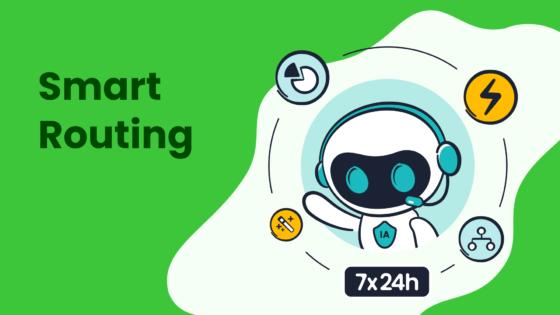
Data Sources in Contact Centers
Contact centers collect a huge amount of data every day. Predictive analytics uses this data to create real-time insights that help teams make better decisions. The main sources of data in contact centers include:
- Customer feedback surveys give direct insights into what customers like or dislike.
- Agent performance data, such as customer satisfaction scores and average handle time, show how well agents serve customers.
- Interaction recordings, like call and chat transcripts, help find training needs and improve quality.
- Interaction analytics use AI to study conversations for mood, common problems, and trends.
- Workforce management systems track scheduling and staffing, helping prevent agent burnout.
- Customer relationship management (CRM) systems store customer profiles and history, making service more personal.
Each of these data sources adds unique insights. When combined, they power predictive analytics to deliver real-time insights that improve both customer experience and business results. Sobot’s Voice/Call Center uses these data streams to provide real-time insights for managers and agents, helping them respond quickly to changing needs.
Tip: Using multiple data sources gives a fuller picture and leads to more accurate predictive insights.
AI and Machine Learning
AI and machine learning drive predictive analytics by turning raw data into actionable insights. These technologies analyze real-time data from every customer interaction. They spot patterns, predict future needs, and give real-time insights that help agents act fast.
AI-driven agent scoring uses machine learning to check call duration, customer satisfaction, script use, and even customer mood. This creates fair, real-time performance scores for agents. Machine learning also finds trends in agent interactions, which helps with targeted training and ongoing improvement. AI scoring automates reviews, saving time and giving real-time feedback.
| Metric Category | Metric | Quantified Improvement Target |
|---|---|---|
| Customer Experience | Customer Satisfaction Score | 15-25% improvement |
| Net Promoter Score | 20-point increase | |
| Customer Effort Score | 30% reduction | |
| First Call Resolution | 80% or higher resolution rate | |
| Operational Efficiency | Average Handle Time | 25-40% reduction |
| Agent Utilization | 75-85% productive time | |
| Queue Times | Under 30 seconds average | |
| Abandonment Rates | Below 3% | |
| Business Impact | Cost Per Contact | 30-50% reduction |
| Revenue Per Agent | 20-35% increase | |
| Agent Retention | 25% improvement | |
| Time to Proficiency | 40% reduction in training |
Sobot’s AI-powered Voicebot and unified workspace use these predictive analytics techniques to deliver real-time insights. This helps teams improve first-call resolution, reduce wait times, and boost customer satisfaction. AI tools also help with real-time monitoring, so managers can make quick changes and keep service quality high.

Applications in Sobot Voice/Call Center
Call Volume Forecasting
Contact center predictive analytics helps teams prepare for busy times. Sobot’s Voice/Call Center uses predictive analytics to study past call data and real-time trends. The system learns from patterns and predicts when more customers will need help. This lets managers schedule the right number of agents before a rush starts.
Predictive analytics tools in Sobot’s platform use machine learning to improve forecast accuracy. The system checks both old and new data, so it can spot changes quickly. With predictive analytics, Sobot’s call volume forecasting reaches an accuracy rate of 90-95%. This is much higher than traditional methods, which only reach about 75-80%. Teams see a 15-30% improvement in forecast accuracy and a 25-40% drop in forecast errors. These gains help managers plan shifts, reduce staff stress, and keep customer service running smoothly.
| Metric Description | Performance with Predictive Analytics / AI Support | Performance with Traditional Methods |
|---|---|---|
| Forecast Accuracy Rate | 90-95% | 75-80% |
| Improvement in Forecast Accuracy (AI-driven systems) | 15-30% increase over traditional methods | N/A |
| Reduction in Forecast Deviation | 25-40% | N/A |
| Scheduling Efficiency Improvement | 10-25% | N/A |
| Staff Attrition Reduction | 15-20% | N/A |
| Customer Satisfaction Improvement | 10-15% | N/A |
Predictive analytics software in Sobot’s Voice/Call Center helps teams respond to sudden spikes in demand. This keeps wait times low and customer satisfaction high. Accurate forecasting also means fewer missed calls and better use of resources.
Smart Routing and Personalization
Predictive analytics tools in Sobot’s Voice/Call Center make every customer interaction smarter. The system uses intelligent IVR and AI-powered Voicebot to understand what each customer needs. It checks customer history, past service records, and real-time data to decide the best agent or team for each call.
Smart routing sends calls to agents with the right skills. This reduces wait times and boosts first-call resolution. Personalization means the system greets customers by name and remembers their preferences. Sobot’s unified workspace gives agents all the information they need in one place. This helps agents solve problems faster and improves customer satisfaction.
Predictive analytics software also tracks agent performance and customer feedback. Managers use these insights to coach agents and improve service quality. The system’s real-time monitoring helps teams spot issues early and fix them before they grow.
Note: Sobot’s smart routing and personalization features help over 10,000 brands improve customer satisfaction, reduce costs, and increase efficiency.
Real-World Example: Agilent’s Success
Agilent, a leader in life sciences and diagnostics, wanted to improve customer service efficiency and satisfaction. The company faced high call volumes and needed a way to handle routine questions quickly. Agilent chose Sobot’s omnichannel workbench and AI-powered chatbot to solve these challenges.
Sobot’s predictive analytics tools helped Agilent route calls to the right agents and automate simple tasks. The AI-powered Voicebot answered common questions, so human agents could focus on complex issues. The unified workspace let agents see all customer data in real-time, making service faster and more accurate.
After using Sobot’s solution, Agilent saw a sixfold increase in efficiency and a 25% drop in costs. Customer satisfaction reached 95%. The predictive analytics software helped Agilent’s team respond quickly and keep service quality high.
| Metric | Improvement/Value |
|---|---|
| Agent Workload Reduction | 60% decrease |
| Conversion Rate Increase | 15% increase |
| Net Promoter Score (NPS) | 35% improvement |
| Resolution Time | Under 1 minute (AI + Human) |
| Return on Investment (ROI) | 234% increase |
| Brands Served | Over 10,000 brands improved NPS, reduced costs, and increased efficiency |
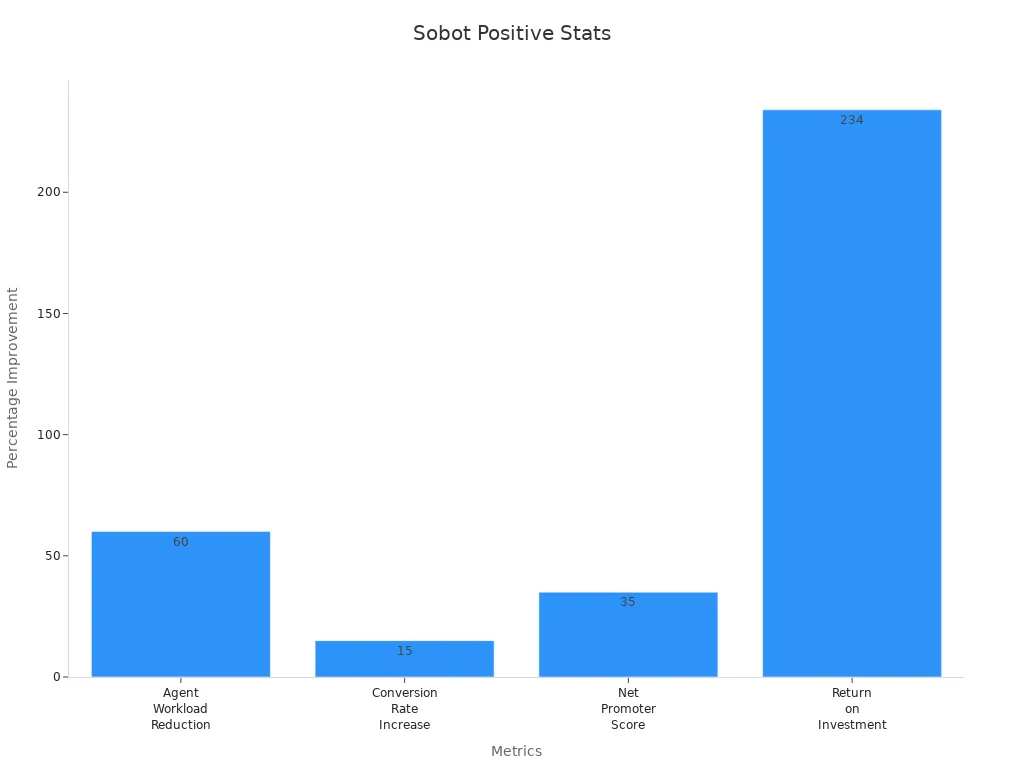
Agilent’s story shows how predictive analytics can transform customer service. Sobot’s Voice/Call Center gives teams the predictive analytics tools they need to boost performance, efficiency, and satisfaction.
Benefits for Contact Centers
Faster Response and Resolution
Predictive analytics helps contact centers respond to customer needs quickly. AI-powered chatbots now handle over 60% of customer interactions, which leads to a 40% reduction in response time. This improvement means customers get answers faster, and satisfaction scores rise by 30%. Predictive call routing directs each customer to the right agent, while interactive voice response systems manage initial contacts. These tools reduce wait times and help agents resolve issues on the first call. Sobot’s Voice/Call Center uses predictive technology to analyze real-time data, providing instant responses and 24/7 service. This approach ensures customers never face long waits, and agents can focus on delivering high-quality service.
Note: Predictive analytics forecasts call surges, so managers can schedule extra staff before peak times. This proactive planning keeps response times low and customer satisfaction high.
Improved Resource Allocation
Contact centers use predictive analytics to make smarter decisions about resources. AI algorithms analyze large datasets to forecast future needs, which helps managers allocate staff and tools more efficiently. For example, Salesforce increased sales efficiency by 25% using real-time performance indicators, and Coca-Cola reduced logistics waste by 20% with predictive demand management. Sobot’s unified workspace and analytics help teams track agent performance and adjust schedules based on customer demand. This reduces both overstaffing and understaffing, saving money and improving service quality. Predictive analytics also supports strategic planning for hiring and training, making sure every customer receives timely service.
- AI enables precise forecasting of call volumes.
- Staffing optimization improves customer wait times and reduces costs.
- Better scheduling lowers agent burnout and attrition.
- Proactive capacity planning supports business growth.
Enhanced Customer Loyalty
Predictive analytics builds stronger customer loyalty by personalizing every service interaction. The system identifies at-risk customers and triggers targeted retention strategies. Metrics like Customer Lifetime Value (CLV), churn rate, and repeat purchase rate show clear improvements after using predictive solutions.
| Metric / Outcome | Description / Result |
|---|---|
| Customer Lifetime Value (CLV) | Higher revenue from each customer over time |
| Churn Rate | Lower customer loss through early intervention |
| Repeat Purchase Rate | More frequent returns and purchases |
| Loyalty Program Engagement | Increased reward redemption and brand investment |
| Customer Engagement Score | Higher interaction across all channels |
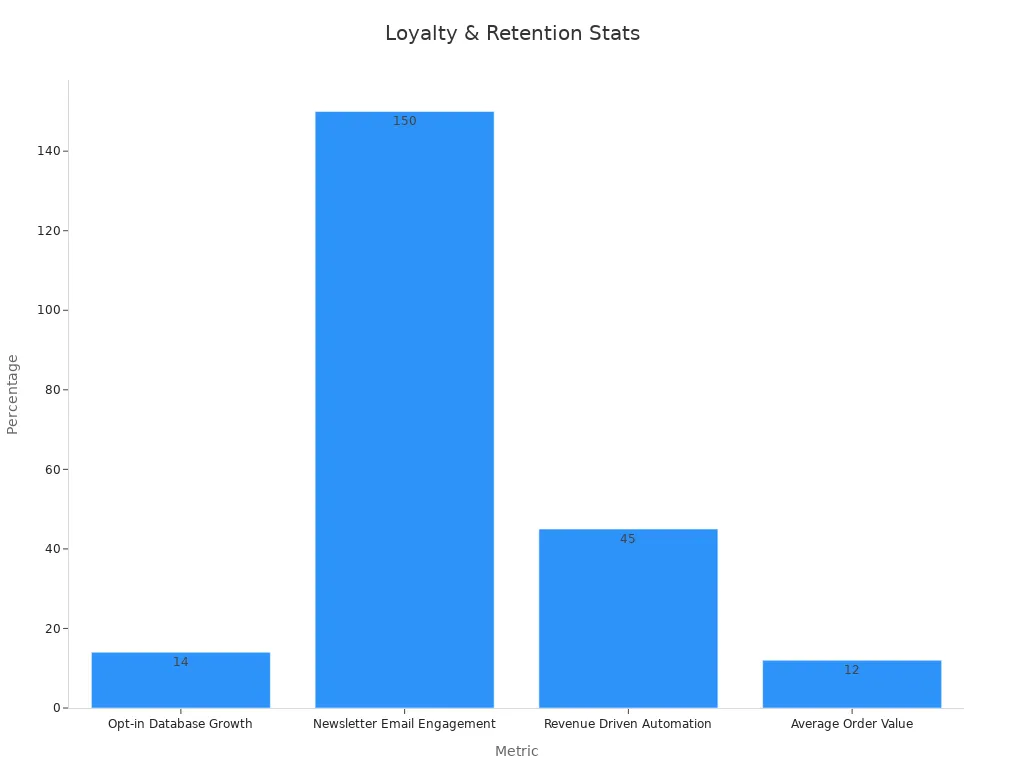
Sobot’s predictive tools help companies engage customers during critical periods, increasing retention and boosting long-term value. Research shows companies using customer analytics see a 126% profit improvement, proving the power of predictive analytics in building loyalty and driving business success.
Implementation Challenges
Data Quality and Integration
Contact centers rely on accurate data for predictive analytics to work well. Many teams face problems because their data comes from different sources and formats. Some data may be unstructured, outdated, or have errors from manual entry. These issues make it hard to trust the results of predictive analytics. Teams often struggle to combine data from CRM tools, ERP systems, and workforce optimization platforms into one place. Standardizing this data takes time and skill. Privacy rules add another layer of complexity, as teams must remove personal information before using the data. A shortage of skilled data professionals makes these tasks even harder. Companies can improve results by cleaning and validating data, setting up strong data governance, and training staff. Sobot’s unified workspace helps by integrating data from multiple sources, making it easier for agents to access reliable information.
Tip: Regular data cleaning and validation help prevent errors and boost the accuracy of predictive analytics.
Change Management
Introducing predictive analytics changes how contact centers operate. Employees must learn new tools and trust data-driven decisions. Some may resist these changes, especially if they do not understand the benefits. Cross-functional teams, including IT and operations, need to work together. In manufacturing, for example, teams have seen success by using phased rollouts and ongoing training. Companies like BMW and General Motors improved results by focusing on teamwork and continuous improvement. Sobot supports change management by offering training and support for its solutions, helping teams adapt smoothly.
- Phased implementation reduces risk.
- Ongoing training builds confidence in new systems.
- Clear communication helps teams understand the value of data-driven approaches.
Security and Compliance
Security and compliance are top concerns when using predictive analytics. Contact centers handle sensitive customer data, so they must protect it from threats. Predictive analytics helps by monitoring for risks and sending alerts if something unusual happens. Organizations use metrics like the Common Vulnerability Scoring System (CVSS) to measure risks and prioritize fixes. Automated systems can spot compliance issues early, reducing the chance of breaches. Sobot’s solutions use encrypted data transfer and follow strict privacy standards to keep customer data safe. Regular audits and updates help maintain compliance with changing regulations.
| Metric | Focus Area | Key Factors |
|---|---|---|
| CVSS | Severity of vulnerabilities | Attack vector, complexity, impact on data |
| EPSS | Likelihood of exploitation | Historical data, vulnerability traits |
Note: Continuous monitoring and strong data governance are essential for secure and compliant predictive analytics.
Future Trends in Predictive Analytics
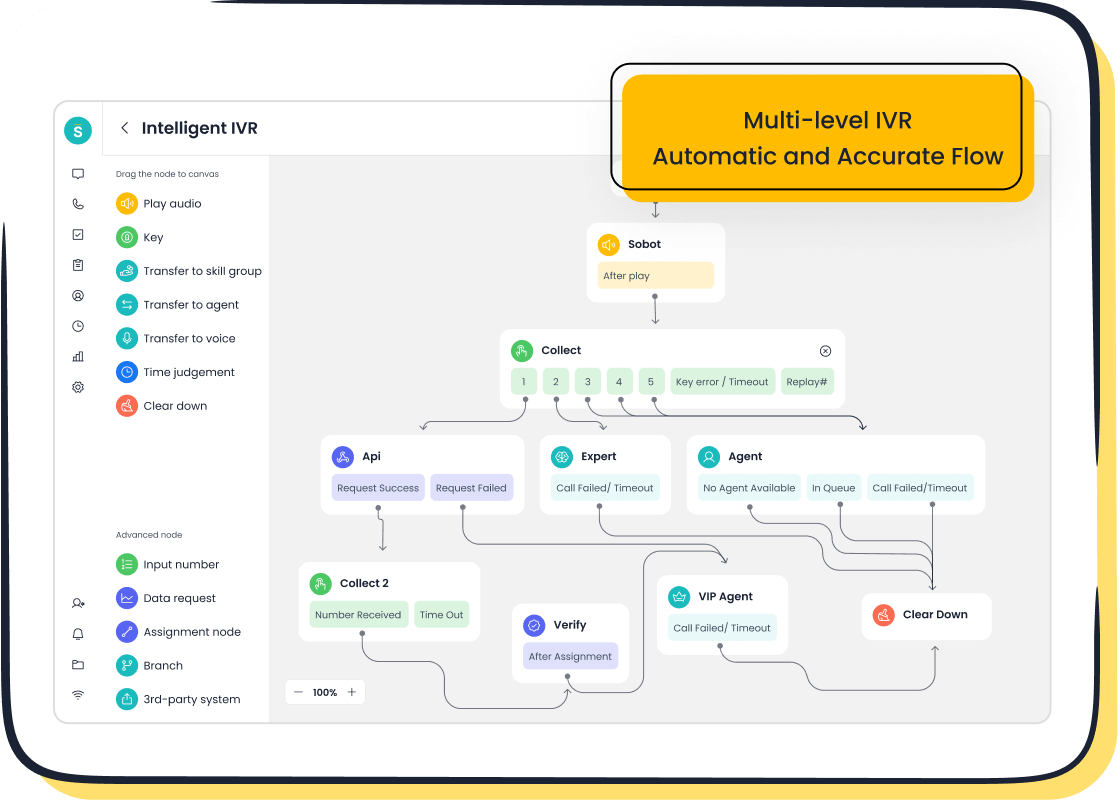
Omnichannel and AI Integration
Contact centers now move beyond single-channel service. Omnichannel strategies unify customer interactions across voice, chat, email, and social media. Predictive analytics plays a key role in this shift. Sobot’s omnichannel solution brings all customer data together, creating a single source of truth for every interaction. This unified approach allows predictive tools to deliver real-time insights and personalized experiences.
Key trends shaping the future include:
- AI-enabled continuous intelligence delivers actionable insights, not just reports.
- Automated decision intelligence lets systems act on predictive insights without human delay.
- Explainable AI (XAI) builds trust by making predictive decisions transparent.
- Synthetic data helps protect privacy while improving predictive models.
- AI handles multimodal data, supporting immersive analytics and deeper insights.
- AI agents work alongside humans, enhancing decision-making and service quality.
- Ethical considerations, such as privacy and bias, remain essential.
Omnichannel predictive analytics helps brands like Nike and BrandAlley boost revenue and win back customers. Unified data supports accurate forecasting, churn prediction, and Customer Lifetime Value projections. Forrester Research projects that retailers using advanced analytics will capture $1.8 trillion in market share this decade (source). Sobot’s platform enables seamless customer journeys, allowing users to switch channels without disruption and receive consistent, predictive service.
Preparing for 2025 and Beyond
Businesses prepare for 2025 by investing in predictive analytics and AI-powered solutions. Over 50% of companies expect to adopt these tools by 2025. Predictive analytics enables faster, more effective decision-making for 56% of organizations. Efficiency and productivity improve for 64% of users, while more than half report positive financial impacts.
| Forecast Aspect | Details & Projections |
|---|---|
| Business Adoption | Over 50% of businesses will use AI-powered predictive analytics by 2025 |
| Decision-Making Impact | 56% report faster, more effective decisions |
| Efficiency Gains | 64% see improved efficiency and productivity |
| Financial Performance | Over half observe revenue growth and cost savings |
| Competitive Advantage | 43% gain a competitive edge through predictive analytics |
Predictive analytics strengthens resilience by detecting threats and modeling crisis scenarios. Organizations use predictive insights for supply chain management, risk reduction, and customer engagement. Continuous learning and ethical AI use remain vital for trust and accuracy. Sobot’s commitment to innovation and customer-centricity ensures its solutions evolve with these trends, helping brands stay ahead in a fast-changing world.
Tip: Ongoing innovation and a customer-first mindset help businesses maintain a competitive edge as predictive analytics evolves.
Predictive analytics transforms contact centers by enabling dynamic staffing, reducing customer wait times, and improving agent performance. Sobot’s solutions use predictive analytics to personalize every customer interaction and automate quality management. Research shows predictive analytics increases customer satisfaction, reduces churn, and boosts customer engagement through proactive, data-driven strategies. Companies see up to 50% annual cost reduction and a Net Promoter Score jump from –29 to +70. Sobot helps businesses prepare for the future of customer service. Explore Sobot’s predictive analytics tools to lead the next era of customer engagement.
FAQ
What is predictive analytics in a contact center?
Predictive analytics uses data and AI to forecast customer needs. It helps agents solve problems faster. For example, Sobot’s Voice/Call Center predicts call spikes, so teams prepare in advance. This leads to better customer service and higher satisfaction.
How does predictive analytics improve customer experience?
Predictive analytics identifies patterns in customer behavior. It routes each customer to the right agent. Sobot’s unified workspace gives agents real-time customer data. This reduces wait times and increases first-call resolution. Studies show a 30% rise in customer satisfaction with predictive tools.
Can predictive analytics help reduce customer service costs?
Yes. Predictive analytics forecasts call volumes and customer demand. Managers use this data to schedule staff efficiently. Sobot’s AI-powered Voicebot automates routine customer questions. Companies like Agilent saw a 25% cost reduction after using Sobot’s predictive analytics.
Is customer data safe with predictive analytics solutions?
Sobot uses encrypted data transfer and follows strict privacy standards. Regular audits ensure customer data stays secure. The system meets global compliance requirements. Protecting customer information remains a top priority for every contact center using predictive analytics.
How can a business start using predictive analytics for customer service?
A business can start by collecting accurate customer data from all channels. Sobot’s omnichannel solution integrates this data into one platform. Teams then use AI-powered tools to analyze trends and improve customer interactions. Training and support help staff adapt quickly.
See Also
Best Call Center Analytics Platforms To Use In 2024
Discover Leading Cloud-Based Contact Centers For 2025
Best Speech Analytics Solutions For Call Centers 2024
Comprehensive Reviews Of Leading Contact Center Solutions 2024
